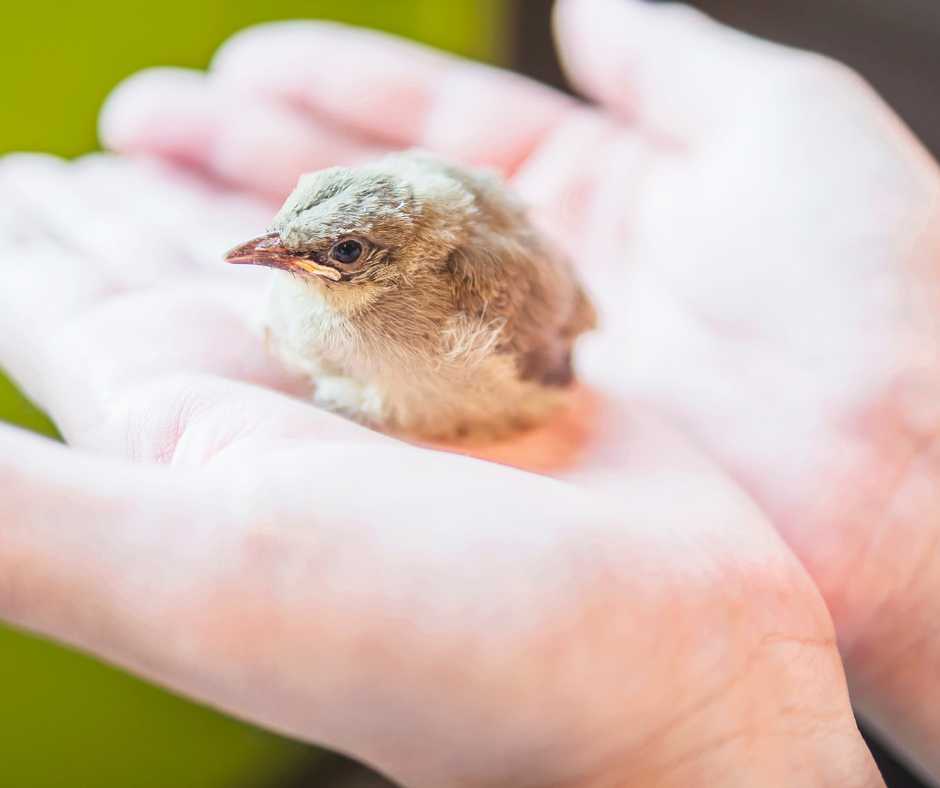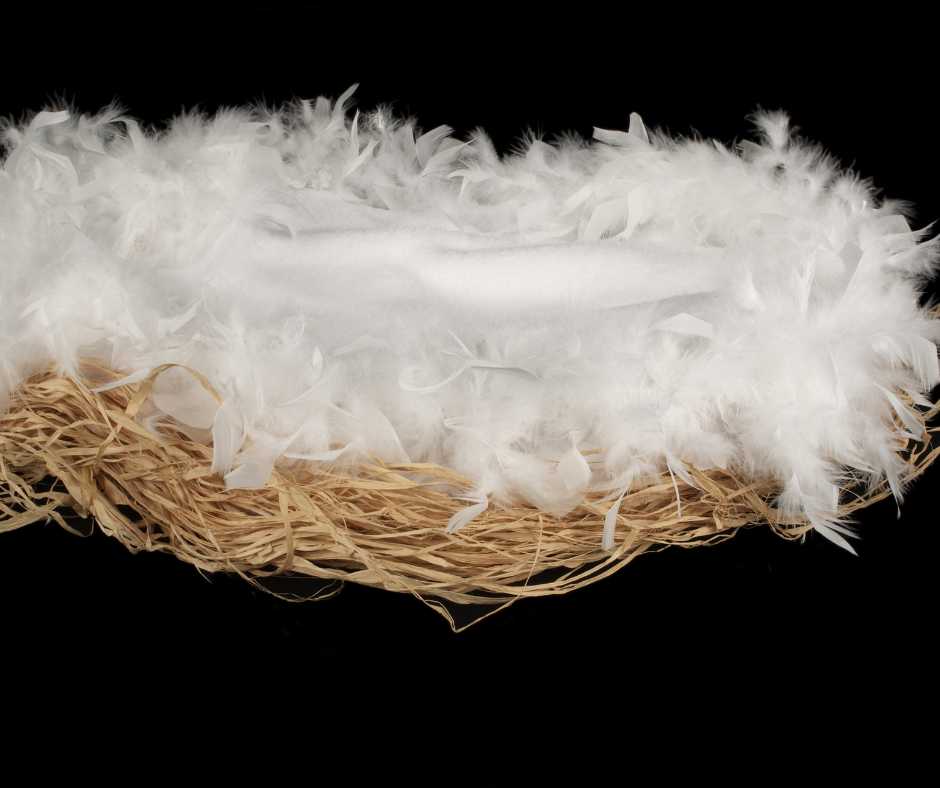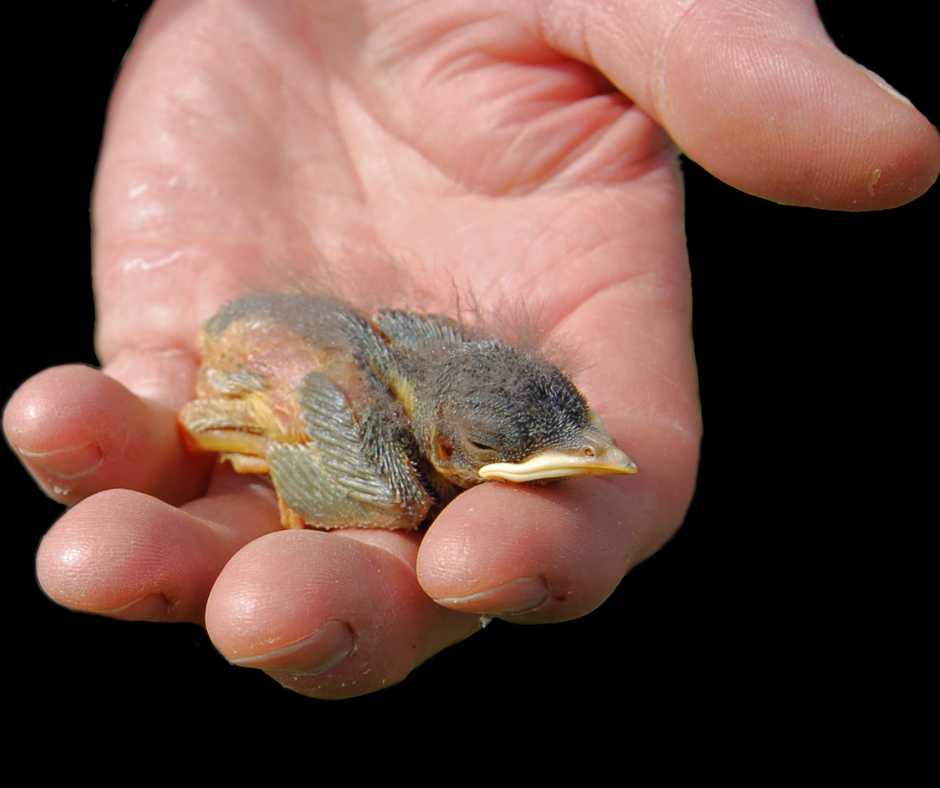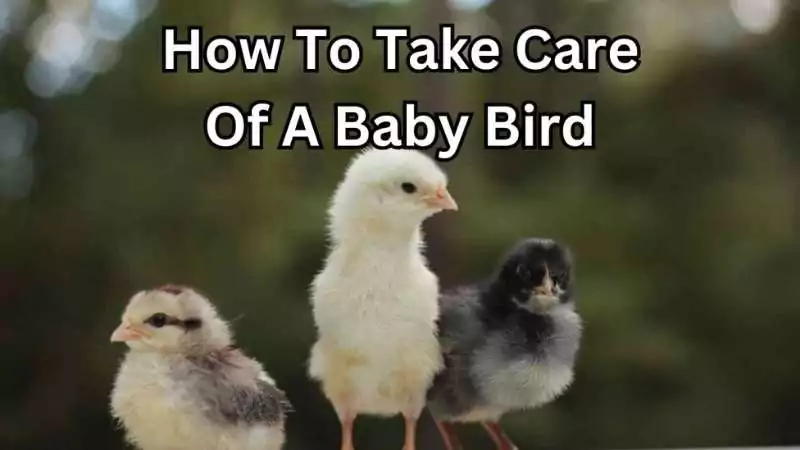Discovering a baby bird out of its nest can leave you puzzled: Is it a nestling or a fledgling needing your help?
Identify if the baby bird is a nestling (needs a warm nest) or fledgling (observed from afar). Use clean hands for gentle help. Feed according to species, not bread/milk. Nestlings eat every 15-20 mins in daylight. For help or if injured, contact a wildlife rehabilitator.
This blog dives into the essential steps on how to take care of a baby bird, covering everything from identifying their growth stage to creating a safe environment for them.
We’ll explore the right food to offer and how often, debunk myths about human scent, and guide you through the process until professional help can take over. Get ready to learn everything you need to ensure the little one thrives under your care.
Identifying Your Feathered Foundling: Nestling or Fledgling?
So, you’ve stumbled upon a baby bird, and you’re scratching your head, wondering if it’s a nestling or a fledgling. Don’t worry; you’re not alone in this. Let’s dive into the nitty-gritty of determining who your little guest is.
Characteristics of Nestlings and Fledglings
Picture this: one child crawls, barely clothed, while another eagerly tries walking, shoes laced up. That’s the essence of distinguishing nestlings from fledglings. Nestlings, akin to infants, boast feathers and seem too fragile for the outside world. Finding one outside its nest is like discovering a baby far from its crib—an immediate signal something’s amiss.
Fledglings mirror adventurous toddlers, decked out in an uneven coat of feathers, teetering on the edge of independence. They’re seen hopping about, wings flapping awkwardly as they master the basics of flight. Their appearance might evoke a chuckle, reminiscent of our clumsy steps toward growing up.
The Significance of Age in Care
Identifying your find as a nestling or fledgling dictates your next move. Nestlings demand a crafted haven, mimicking their natural nest to provide warmth and security. A small container lined with soft materials can serve as a temporary abode, offering the comfort they sorely need.
Fledglings, embarking on a quest of self-discovery, require less hands-on care. Observing from a distance suffices, ensuring they remain unthreatened by predators as they navigate their newfound freedom. It’s akin to overseeing a child’s maiden bicycle ride; presence is crucial, yet the essence of their endeavor is independence.
Encountering a baby bird prompts a critical assessment: Is this a vulnerable infant needing immediate care or a young explorer learning life’s ropes? The distinction influences your intervention, but remember whichever the case; your compassion plays a pivotal role in their survival story.

Immediate Steps for Ensuring Safety
Stumbling upon a baby bird can stir up a mix of concern and uncertainty. What’s the best course of action? Let’s explore.
Should You Touch That Baby Bird?
There’s a myth that if you touch a baby bird, its parents will snub it forever because of the human scent. This is not true. Birds are small on the human smell-o-meter. If you decide to help, ensure your hands are clean and your touch is as gentle as a feather.
Assessing the Situation: To Rescue or Not?
Take a good look around. Are there noisy cats or dogs nearby? Or is it the baby bird chilling on the ground? Sometimes, playing the waiting game is wise if danger is not immediately present. Keep a discreet eye out for the parents; they might be closer than you think. However, if there’s a clear danger or the bird is hurt, it’s time to step in gently.
Creating a Temporary Safe Haven
Consider setting up a mini-retreat for your feathered friend if intervention is necessary. A shoebox lined with soft tissues can become a cozy nook for a needy bird. This makeshift nest should be kept warm but not hot, quiet, and somewhere out of reach from curious pets or little siblings.
Remember, this is a temporary setup to keep the bird safe until you can figure out the following steps, preferably with guidance from a wildlife expert.
Navigating this situation can be manageable. With some knowledge and heart, you can make a big difference in a bird’s life. And who knows? This might be one of those stories you’ll share again and again about the day you became a hero to a tiny, feathered friend.

Nurturing the Orphaned Bird: Feeding and Hydration
Diving into feeding a baby bird is more complex than popping open a can of worms. It’s a delicate dance of matching dietary needs to bird species, ensuring we’re not making kitchen blunders that could hurt our feathered guests.
What Can I Feed a Wild Baby Bird?
Birds are not one-size-fits-all eaters. What tickles the taste buds of a robin might not do the same for a sparrow. Insects, softened fruits, or specific grains? The menu varies widely. Websites like the Audubon Society offer knowledge on feeding different bird types. The golden rule? These are interim snacks until a wildlife expert takes over. And remember, no bread and milk—it’s not a diner breakfast for these tiny diners.
Do Baby Birds Need Water?
Here’s a curveball – baby birds rarely need a water bowl. They get their hydration from the food they eat. So, before you consider playing bartender, remember that offering water directly could lead to unintended swimming lessons they’re not ready for.
Feeding Frequency and Quantities
If you thought newborns were high maintenance, baby birds ask for a refill almost every 20 minutes from sunup to sundown. This feeding frenzy varies with the bird’s age and species, painting a picture of commitment for the caretaker. It’s like being on diner duty, where the customers are tiny, feathered, and highly vocal about their orders.
As you step into the role of a temporary bird guardian, remember the journey is as rewarding as it is demanding. Each feeding, each careful drink, brings these birds closer to soaring back into the wild.
And isn’t that the ultimate goal? To watch them flap off into their natural habitat, healthy and ready to conquer the skies. Your part in their story is brief but impactful, a chapter they carry with them as they fly home.
When and How to Seek Professional Help
Sometimes, despite our best efforts, we must be equipped to give a baby bird everything it needs to thrive. That’s when it’s time to call in the experts.
Can a Baby Bird Survive Without Its Mother?
Honestly, baby birds do best with their families or with experts who know how to take care of them. These experts are called wildlife rehabilitators and have special training to help birds get better. You can find these helpers through the National Wildlife Rehabilitators Association, which has a list of people ready to help.
Finding and Contacting a Wildlife Rehabilitator
When you see a baby bird that looks like it’s having a tough time, it’s natural to want to help. You can start by looking up “wildlife rehabilitator near me” online to find someone nearby who can help. These experts know exactly what to feed the bird and how to treat any injuries it might have.
After you find a rehabilitator, remember to tell them where you found the bird, how it seems to be doing, and if there are any dangers around. This information is essential. Calling for help is a big step in giving the baby bird a chance to grow up and live in the wild again.

People Also Asked
How Can You Tell How Old a Baby Bird Is?
Feathers are a good indicator. Bare skin means a very young fledgling, while a full coat of feathers suggests an older fledgling.
Should I Leave a Baby Bird Alone?
If the bird is a fledgling, it is wise to observe from a distance. Mom and Dad might be nearby, waiting for you to leave.
What to Do If a Baby Bird Fell Out of the Nest?
If the original nest is safe, gently returning the bird is your best move. If not, create a makeshift nest as advised by The Spruce.
Do Baby Birds Drink Water?
Baby birds do not require water the way we think. Feeding them their natural diet provides the necessary hydration.
Wrap Up
Helping a baby bird is a big adventure. Whether you find a tiny bird without feathers or one starting to explore, what you do next is super important. Keeping them warm, giving them the right food, and knowing when to watch from afar are vital steps. Sometimes, you should call in experts who care for these little ones.
Remember, helping a baby bird isn’t about the moment; it’s about giving them a chance to grow up and fly away. Every bit of help you give makes a big difference in their world. So, if you ever find a baby bird in need, take a deep breath, and remember, you’ve got this!

